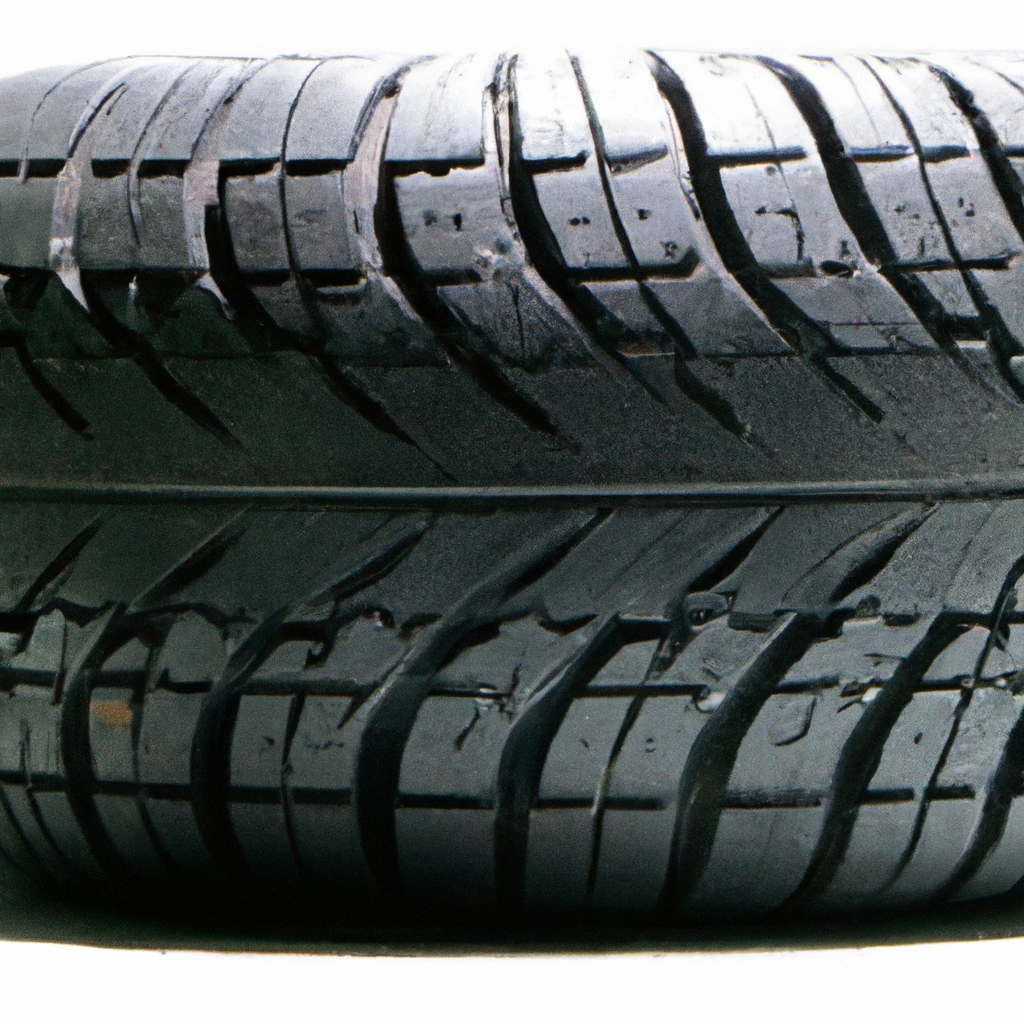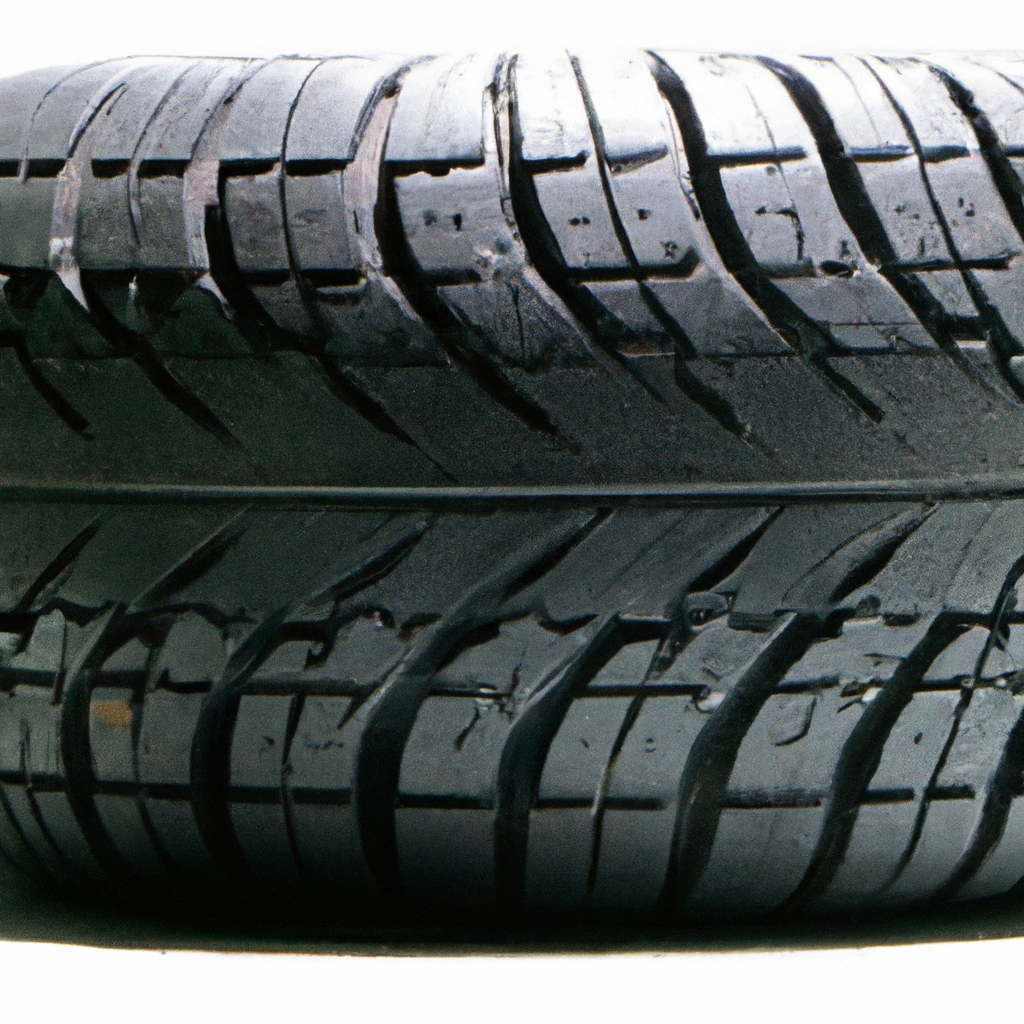Have you ever wondered if run-flat tires could be used on vehicles with different drivetrain types? Well, the answer might surprise you! In this article, we will explore the possibility of using run-flat tires on various drivetrain types and uncover whether they are a suitable option. So, if you’re curious about the compatibility of run-flat tires with different vehicles, sit back, relax, and let’s find out together!
Run-Flat Tires Overview
When it comes to choosing the right tires for your vehicle, understanding the different options available is crucial. One popular choice in recent years has been run-flat tires. These tires are designed to enable you to continue driving safely even after experiencing a puncture or a loss of air pressure. In this article, we will provide a comprehensive overview of run-flat tires, including their definition, purpose, advantages, and disadvantages. We will also explore the compatibility of run-flat tires with different drivetrain types, their characteristics, installation and replacement considerations, performance and handling, safety considerations, cost considerations, and availability and compatibility.
Definition and Purpose of Run-Flat Tires
Run-flat tires, as the name suggests, are tires that are specifically designed to allow you to continue driving even when they have experienced tire damage or a complete loss of air pressure. They are equipped with reinforced sidewalls that help support the weight of the vehicle even when the tire is flat. This feature eliminates the need for immediate tire replacement or the hassle of changing a tire on the side of the road. Run-flat tires provide an added level of safety and convenience, allowing you to reach a safe location or a tire repair facility without the need for additional assistance.
Advantages of Run-Flat Tires
There are several advantages to using run-flat tires on your vehicle. The primary advantage is the added safety they provide. With run-flat tires, you can continue driving even after experiencing a tire puncture or loss of air pressure. This means you can avoid the potentially dangerous situation of being stranded on the side of the road. Run-flat tires also eliminate the need for a spare tire, which can free up valuable space in your vehicle and reduce overall vehicle weight. Additionally, run-flat tires can save you time and money by preventing the immediate need for tire replacement or repair.
Disadvantages of Run-Flat Tires
While run-flat tires offer many advantages, it is important to consider their disadvantages as well. One major disadvantage is the higher initial cost of run-flat tires compared to traditional tires. Run-flat tires require specialized construction and materials, making them more expensive to manufacture. Another disadvantage is the limited availability of run-flat tires for certain vehicle models. Not all vehicles are compatible with run-flat tires, and finding the right fit for your specific vehicle may require more effort. Finally, run-flat tires typically have a stiffer ride compared to regular tires, which can impact overall driving comfort.
Drivetrain Types
Before delving into the compatibility of run-flat tires with different drivetrain types, it is important to understand the various drivetrain configurations commonly found in vehicles. The four primary drivetrain types are front-wheel drive (FWD), rear-wheel drive (RWD), all-wheel drive (AWD), and four-wheel drive (4WD). Each drivetrain type has its own unique characteristics and performance capabilities. Let’s explore each type in more detail.

Front-Wheel Drive (FWD)
Front-wheel drive (FWD) is a drivetrain configuration in which the engine powers the front wheels of the vehicle. This layout is commonly found in compact cars and sedans. FWD offers several advantages, such as improved traction in slippery conditions and better fuel efficiency. However, FWD vehicles may have limitations when it comes to high-performance driving and handling.
Rear-Wheel Drive (RWD)
Rear-wheel drive (RWD) is a drivetrain configuration in which the engine powers the rear wheels of the vehicle. This layout is typically found in sports cars and luxury vehicles. RWD offers excellent handling characteristics, especially in high-powered vehicles. It allows for a balanced weight distribution and enhanced control during acceleration and cornering. However, RWD vehicles may struggle with traction in slippery conditions.
All-Wheel Drive (AWD)
All-wheel drive (AWD) is a drivetrain configuration in which power is sent to all four wheels of the vehicle. AWD systems can vary from full-time to part-time, depending on the vehicle. AWD offers improved traction and stability in various driving conditions, making it a popular choice for SUVs and crossovers. It provides enhanced control and handling, especially in off-road or inclement weather situations. However, AWD vehicles typically have higher fuel consumption compared to FWD or RWD vehicles.
Four-Wheel Drive (4WD)
Four-wheel drive (4WD) is a drivetrain configuration commonly found in trucks and off-road vehicles. 4WD allows the driver to manually engage all four wheels simultaneously for increased traction and off-road capability. This drivetrain configuration is ideal for rugged terrains and towing heavy loads. However, 4WD systems often add weight and complexity to the vehicle, which can impact fuel efficiency and overall handling dynamics on paved roads.
Characteristics of Run-Flat Tires
Now that we have a better understanding of the various drivetrain types, it’s time to explore the different characteristics of run-flat tires. Run-flat tires can be categorized into three main types: self-supporting run-flat tires, support ring system run-flat tires, and auxiliary supported run-flat tires. Each type has its own unique construction and characteristics. Let’s take a closer look at each category.

Self-Supporting Run-Flat Tires
Self-supporting run-flat tires, also known as self-sealing run-flat tires, are designed with a reinforced sidewall that can support the vehicle’s weight even after a loss of air pressure. These tires often feature a special gel or foam compound within the tire structure that helps seal small punctures automatically. Self-supporting run-flat tires offer convenience and peace of mind, as they can provide a temporary solution for minor tire damage.
Support Ring System Run-Flat Tires
Support ring system run-flat tires, commonly known as zero pressure or ZP run-flat tires, utilize an additional supporting ring within the tire structure. This ring acts as a reinforcement and helps support the weight of the vehicle in case of a tire puncture or a loss of air pressure. Support ring system run-flat tires provide extended mobility and can continue to support the vehicle even at zero or low tire pressure. However, they may require specialized equipment for installation and replacement.
Auxiliary Supported Run-Flat Tires
Auxiliary supported run-flat tires are designed to work in conjunction with a separate support structure, typically an internal support ring or an auxiliary support device attached to the wheel. These tires rely on the additional support structure to provide the necessary strength and stability in case of a tire puncture or a loss of air pressure. Auxiliary supported run-flat tires offer increased mobility and compatibility with a wide range of vehicle models. However, they may require specific installation procedures and additional components.
Compatibility with Different Drivetrain Types
Now that we have explored the characteristics of run-flat tires, let’s delve into the compatibility of these tires with different drivetrain types.
Front-Wheel Drive (FWD) Vehicles and Run-Flat Tires
Front-wheel drive (FWD) vehicles are generally compatible with run-flat tires. The design and construction of run-flat tires do not pose any significant challenges for FWD vehicles. The self-supporting and support ring system run-flat tires can be easily installed on FWD vehicles without any major modifications. However, it is important to ensure that the selected run-flat tires meet the manufacturer’s specifications and recommendations for your specific FWD vehicle model.

Rear-Wheel Drive (RWD) Vehicles and Run-Flat Tires
Rear-wheel drive (RWD) vehicles are also compatible with run-flat tires. The drivetrain configuration of RWD vehicles does not affect the installation or performance of run-flat tires. Self-supporting, support ring system, and auxiliary supported run-flat tires can be installed on RWD vehicles without any major issues. However, it is crucial to select run-flat tires that meet the manufacturer’s specifications and recommendations for your specific RWD vehicle model.
All-Wheel Drive (AWD) Vehicles and Run-Flat Tires
All-wheel drive (AWD) vehicles are generally compatible with run-flat tires, but there may be some considerations to keep in mind. The additional mechanical components and complex drivetrain systems of AWD vehicles may affect the compatibility and performance of run-flat tires. It is important to consult the manufacturer’s recommendations and ensure that the selected run-flat tires are suitable for your specific AWD vehicle model. Additionally, AWD systems may require tire rotation and replacement in sets of four to maintain optimal performance and handling.
Four-Wheel Drive (4WD) Vehicles and Run-Flat Tires
Four-wheel drive (4WD) vehicles, particularly those designed for off-road capabilities, may have certain compatibility issues with run-flat tires. The additional weight, complex drivetrain systems, and off-road suspension setups of 4WD vehicles may pose challenges for the installation and performance of run-flat tires. It is crucial to consult the manufacturer’s recommendations and seek expert advice to determine the suitability of run-flat tires for your specific 4WD vehicle model.
Installation and Replacement Considerations
Proper installation and replacement of run-flat tires are essential to ensure their optimal performance and longevity. Let’s explore the key considerations when mounting and replacing run-flat tires on different drivetrain types.
Mounting Run-Flat Tires on Different Drivetrain Types
When mounting run-flat tires on different drivetrain types, it is important to follow the manufacturer’s recommendations and guidelines. The installation procedures for run-flat tires are generally similar to those for regular tires. However, certain drivetrain configurations, such as AWD and 4WD vehicles, may require additional precautions to ensure proper installation. It is advisable to consult a professional tire technician or visit a reputable tire service center to ensure accurate mounting of run-flat tires on your specific vehicle.

Replacing Run-Flat Tires on Different Drivetrain Types
Replacing run-flat tires on different drivetrain types follows a similar process to replacing regular tires. However, there are a few additional considerations. Run-flat tires can have different wear patterns compared to regular tires due to their unique construction and design. It is important to replace run-flat tires when they reach the manufacturer’s recommended tread depth to maintain their performance and safety benefits. Additionally, some drivetrain configurations, such as AWD and 4WD vehicles, may require replacing all four tires simultaneously to ensure balanced performance and traction.
Compatibility with Original Equipment Manufacturer (OEM) Specifications
When selecting run-flat tires, it is crucial to ensure compatibility with the original equipment manufacturer (OEM) specifications of your vehicle. The vehicle manufacturer provides specific recommendations regarding tire size, load rating, speed rating, and other factors that should be adhered to when choosing run-flat tires. Deviating from the OEM specifications can adversely affect the performance, handling, and safety of your vehicle. It is recommended to consult the vehicle owner’s manual or contact the manufacturer directly to verify the compatibility of run-flat tires with your specific vehicle model.
Performance and Handling
The choice of tires significantly influences the performance and handling characteristics of a vehicle. Let’s explore the effects of run-flat tires on different drivetrain types.
Effect of Run-Flat Tires on Front-Wheel Drive (FWD) Vehicles
Run-flat tires can have a slight impact on the performance and handling of front-wheel drive (FWD) vehicles. The reinforced sidewalls of run-flat tires can result in a stiffer ride compared to regular tires. This increased rigidity may affect the overall comfort and road feel of the vehicle. However, advancements in tire technology have reduced this disparity, and many drivers may not notice a significant difference in performance when switching from regular tires to run-flat tires on their FWD vehicles.
Effect of Run-Flat Tires on Rear-Wheel Drive (RWD) Vehicles
Similar to FWD vehicles, run-flat tires can affect the performance and handling of rear-wheel drive (RWD) vehicles. The stiffer sidewalls of run-flat tires may lead to a slightly harsher ride compared to regular tires. However, in RWD vehicles, the impact on handling is generally minimal and may even be beneficial in terms of improved stability during high-speed maneuvers. Many RWD vehicle owners report that the advantages of run-flat tires, such as extended mobility and added safety, outweigh any minor differences in performance.

Effect of Run-Flat Tires on All-Wheel Drive (AWD) Vehicles
The effect of run-flat tires on the performance and handling of all-wheel drive (AWD) vehicles can vary depending on the specific drivetrain configuration and tire characteristics. The additional weight and complexity of AWD systems, combined with the stiffer sidewalls of run-flat tires, may result in a slightly different driving experience compared to regular tires. AWD vehicles equipped with run-flat tires may exhibit improved traction and stability, especially in inclement weather conditions. However, it is important to ensure that the selected run-flat tires are compatible with your specific AWD vehicle model to maintain optimal performance.
Effect of Run-Flat Tires on Four-Wheel Drive (4WD) Vehicles
Four-wheel drive (4WD) vehicles can experience more significant effects when equipped with run-flat tires. The rugged nature and off-road capabilities of 4WD vehicles may be compromised by the stiffer ride and limited availability of run-flat tires. 4WD systems require flexibility and adjustability in tire pressure, which may be restricted by the construction and design of run-flat tires. It is crucial to consult the manufacturer’s recommendations and seek expert advice before installing run-flat tires on your specific 4WD vehicle model.
Safety Considerations
Safety is paramount when it comes to selecting and using tires. Let’s explore the safety considerations associated with run-flat tires.
Maintaining Proper Tire Pressure
While run-flat tires are designed to provide extended mobility even with a loss of air pressure, it is essential to monitor and maintain proper tire pressure. Run-flat tires can only support the weight of the vehicle for a limited distance and at reduced speeds after a puncture or a loss of air pressure. It is crucial to regularly check and adjust tire pressure according to the manufacturer’s recommendations to ensure optimal performance and safety.
Monitoring Tire Damage or Failure
Run-flat tires can sustain minor damage and continue to provide temporary mobility. However, it is important to carefully monitor any tire damage or signs of failure. Run-flat tires are not immune to irreversible damage or complete tire failure, and driving on severely damaged or compromised tires can have severe consequences. If you notice any significant tire damage or experience a sudden loss of air pressure, it is advisable to stop driving and seek immediate assistance or have the tire inspected by a professional.
Adhering to Vehicle Weight Limits
Run-flat tires, like regular tires, have weight limits that should not be exceeded. It is crucial to adhere to the vehicle weight limits recommended by the manufacturer. Overloading the vehicle can result in excessive stress on the tires, leading to premature wear, reduced performance, and potential safety hazards. It is important to check the vehicle’s maximum load capacity and distribute the load evenly to ensure the optimal performance and safety of run-flat tires.
Cost Considerations
When considering run-flat tires for your vehicle, it is important to take into account the associated costs.
Higher Initial Cost of Run-Flat Tires
One of the primary cost considerations when opting for run-flat tires is their higher initial cost compared to regular tires. The specialized construction and materials used in run-flat tires make them more expensive to manufacture, resulting in a higher price tag. However, it is important to weigh this cost against the added safety and convenience provided by run-flat tires. The potential savings in terms of avoiding immediate tire replacement or repair can help offset the higher initial cost over time.
Potential Cost Savings due to Eliminating Spare Tire
Another cost factor to consider when choosing run-flat tires is the elimination of the spare tire. Run-flat tires provide extended mobility after a puncture, eliminating the need for an immediate tire change or the presence of a spare tire in your vehicle. This can free up valuable space in the trunk and reduce overall vehicle weight, resulting in potential fuel savings. Moreover, the cost of maintaining and replacing a spare tire can be avoided with the use of run-flat tires.
Additional Replacement and Repair Costs
While run-flat tires offer extended mobility after tire damage, it is important to recognize that they are not invincible. Run-flat tires can sustain irreversible damage or suffer complete failure, requiring replacement or repair. The cost of replacing or repairing run-flat tires can be higher compared to regular tires, depending on the extent of the damage and the tire manufacturer’s policies. It is crucial to consult with a professional tire technician or visit a reputable tire service center for accurate assessment and repair of run-flat tires.
Availability and Compatibility
The availability and compatibility of run-flat tires can vary depending on the drivetrain type and specific vehicle model.
Availability of Run-Flat Tires for Different Drivetrain Types
The availability of run-flat tires for different drivetrain types has improved in recent years. Most major tire manufacturers offer a range of run-flat tire options for various vehicle models and drivetrain types. However, it is important to note that not all tire models or sizes may be available as run-flat tires. It is advisable to check with tire retailers or consult the manufacturer’s recommendations to ensure the availability of run-flat tires for your specific drivetrain type.
Determining Compatibility with Specific Vehicle Models
Determining the compatibility of run-flat tires with specific vehicle models is crucial to ensure optimal performance and safety. The vehicle manufacturer provides recommendations and specifications regarding tire size, load rating, speed rating, and other factors that should be considered when selecting run-flat tires. It is crucial to consult the vehicle owner’s manual or contact the manufacturer directly to determine the compatibility of run-flat tires for your specific vehicle model.
Conclusion
In conclusion, run-flat tires offer an added level of safety and convenience by allowing you to continue driving even after experiencing a tire puncture or loss of air pressure. They are compatible with a wide range of drivetrain types, including front-wheel drive (FWD), rear-wheel drive (RWD), all-wheel drive (AWD), and four-wheel drive (4WD) vehicles. When considering run-flat tires, it is important to consider factors such as installation and replacement considerations, performance and handling, safety considerations, cost considerations, and availability and compatibility with your specific vehicle and driving needs. By understanding the benefits and limitations of run-flat tires, you can make an informed decision and ensure a safe and comfortable driving experience.

